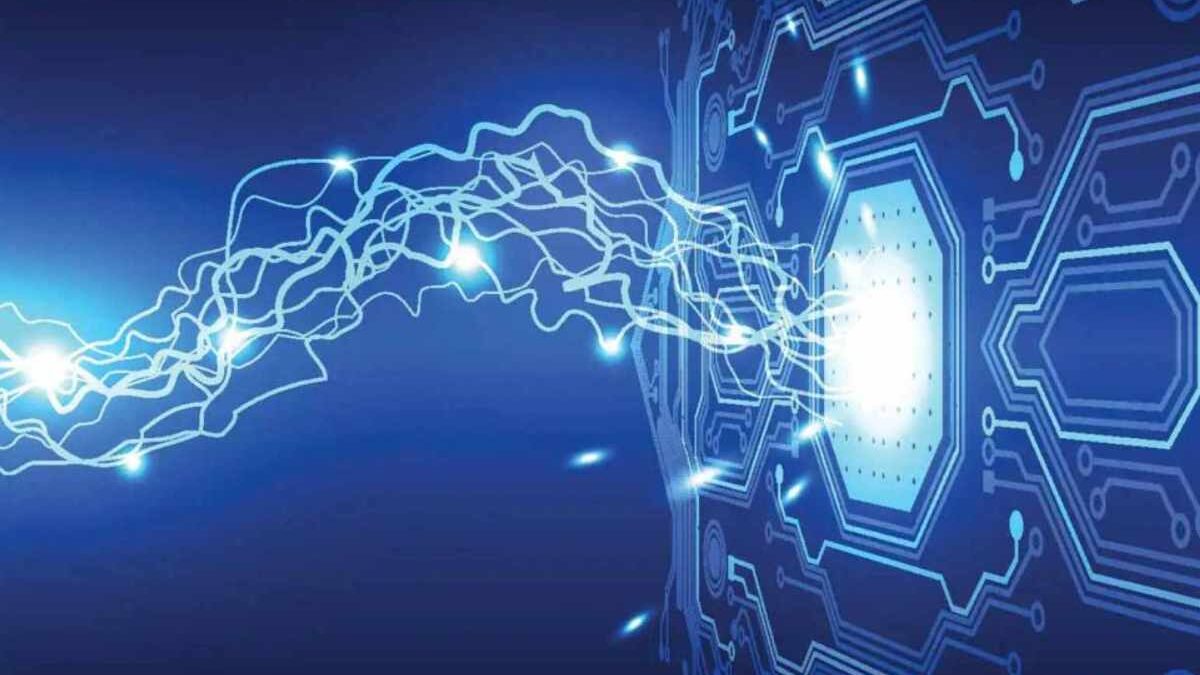Electronic Technology uses and modifies electrical currents to generate, store, transmit, and receive information. This information can be voice over a telephone, images that appear on television, or computer data. Any of these systems bases its operation on the movement of one of the smallest particles known, the electron.
Table of Contents
The Electron is One of The Smallest Particles Known.
Electricity, or at least its effects, has been known since ancient times. In the 6th century BC, the Greek Thales rubbed a piece of amber and observed that it attracted wool (electrostatic attraction). The practical use of electricity began to occur much later. In the 18th century, the first motors that use electric current to produce work were built.
This type of application could not consider electronic. Electricity generators and motors used electric current, but only as a force, not as an information carrier.
This use of the current to handle information did not occur until the nineteenth century. With the appearance of the telegraph first and the telephone later. The telegraph used a simple switch to transmit or not electrical current, and thus signals. The phone improved communication by introducing the speaker and microphone. The appearance of electronics proper occurred at the beginning of the 20th century, with the invention of the vacuum tube.
Types Of Electronics:
Analog electronics: deals with continuous, analog signals, that is, with a type of analog signals to those that exist in the real world, modifying their characteristics (amplifying them, filtering them, etc. Examples of analog signals are temperature, sound, light, and electricity.
Digital electronics – dealing with digital or discrete signals- is an entirely different approach to converting signals into numbers.
A mathematical theorem (Nyquist sampling theorem) guarantees us that numbers can represent any signal and that with these numbers, the original signal is reconstruct.
The Higher Technology in Electronics career of the ITSS aims to train high school graduates at a higher technological level with an aptitude for abstract and mathematics. Reasoning with environmental responsibility and professional ethics contribute to the National Development Plan. Promote productive diversification by applying analog and digital electronics knowledge.
As well as a high knowledge of programming of microcontrollers and communication networks to respond to the labor market requirements through the application of skills and knowledge that allow him to design, execute, and evaluate functions and processes related to communication, electronic, and automation systems. Procedures at the residential and industrial level, including application, adaptation, and technological innovation projects. Provide society with integral professionals capable of solving the problems of zone seven and the country in the discipline of electronics.
What Are The Applications Of Electronics?
Electronics currently perform a wide variety of tasks. The main uses of electronic circuits are the control, processing, distribution of information, conversion, and distribution of electrical energy. Both of these uses involve creating or detecting electromagnetic fields and electrical currents. Then it said that electronics generally covers the following areas of application:
Control Systems
Those allow processes to be start or stop, as with light circuits in our homes. These can even acquire a certain degree of automation.
Power electronics. It is based on the use of electric devices to regulate electrical power and voltage, especially at significant levels, which is critical in energy distribution and other contemporary industrial processes.
Telephones
One of the most significant areas of technological development in electronics has to do with databases and digital data systems, such as the Internet.
Electronics are essential for our daily life since, as time has passed, it becomes more and more embedded in our daily lives. It is due to the technological advances that we have currently had. It can also be said that it is difficult to find someone more. Less connected with daily life, which has not heard of Electronics. On the other hand, today’s young people born in the ’80s and ’90s see electronic and telecommunications services as a basic need. Since they cannot live without electronic devices (cell phones, computers, and the Internet). A clear example of how crucial electronic technology is in our lives is: when a company lacks water, it continues to carry out its work.
Electronics have given rise to a new era, and this new era in the digital age. And we say that there is a new era when the ways of thinking of citizens begin to change. When people have another way of interacting and have other customs. All this is cause due to the development of electronic technology.
Conclusion
It of what the branch of Electronic Engineering is since it deals with devices that operate through the flow of electron beams in a vacuum or a low-pressure gas. The reign of electronics begins with the discovery of the vacuum tube by Thomas Alva Edison, that is, electronics is the empire of the line.

